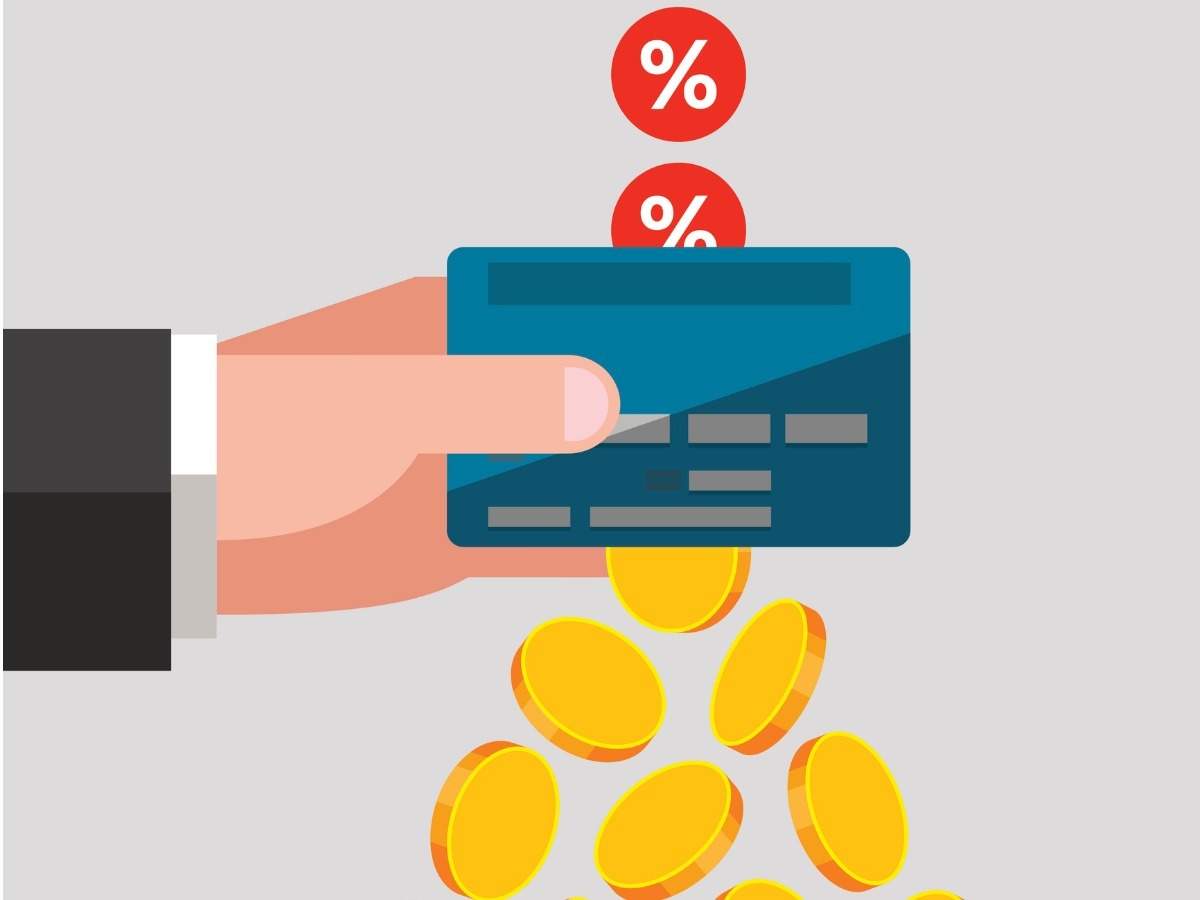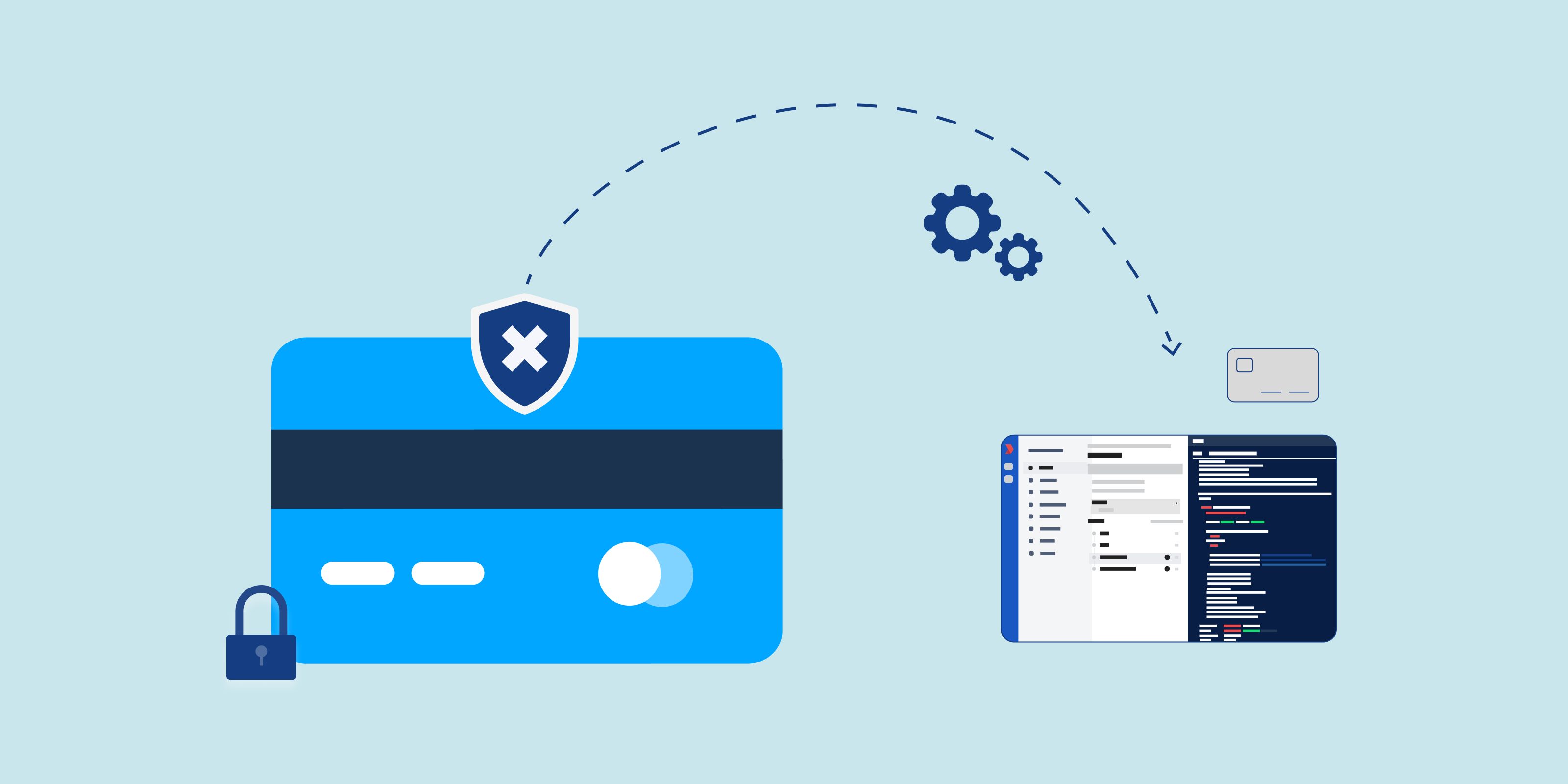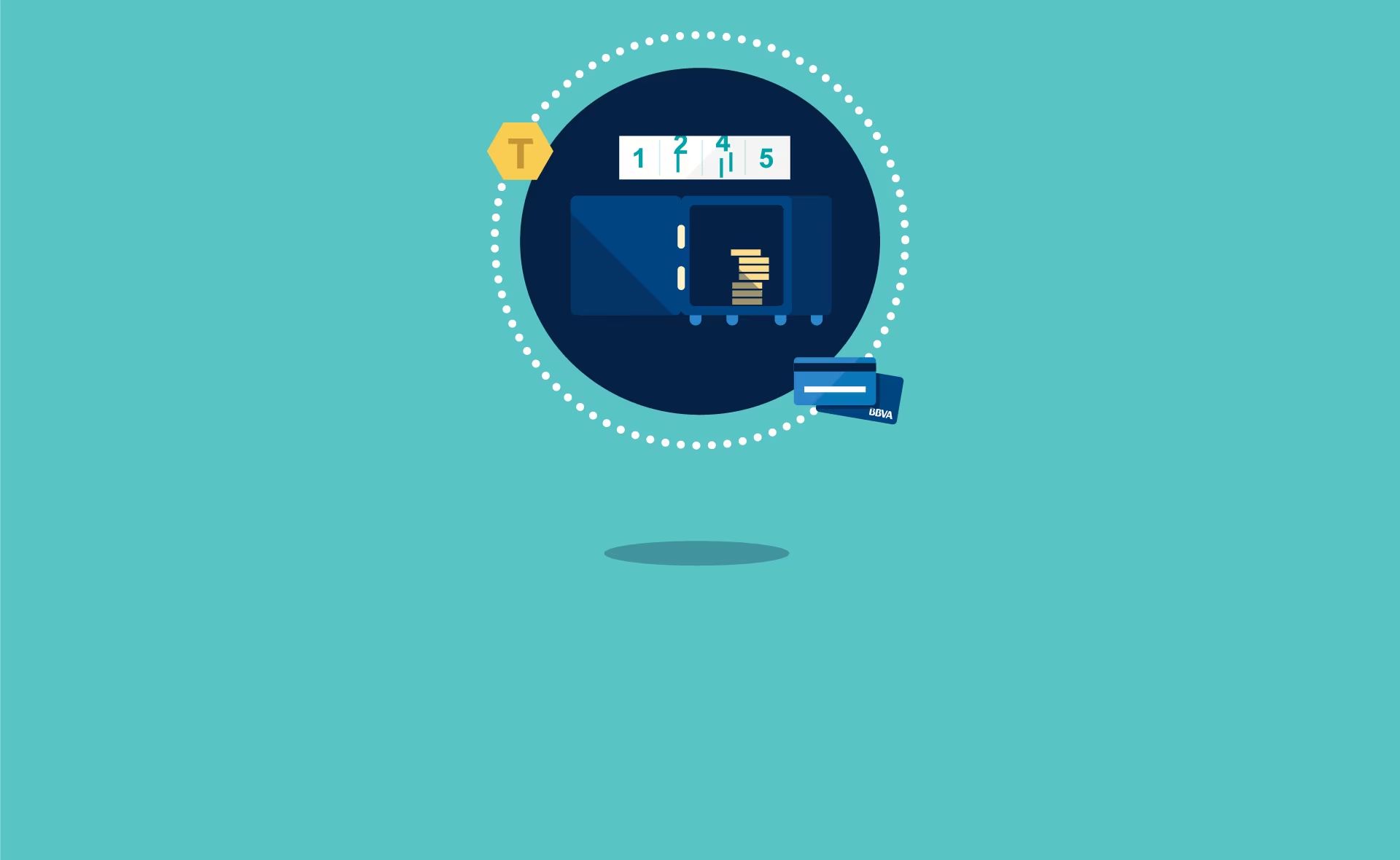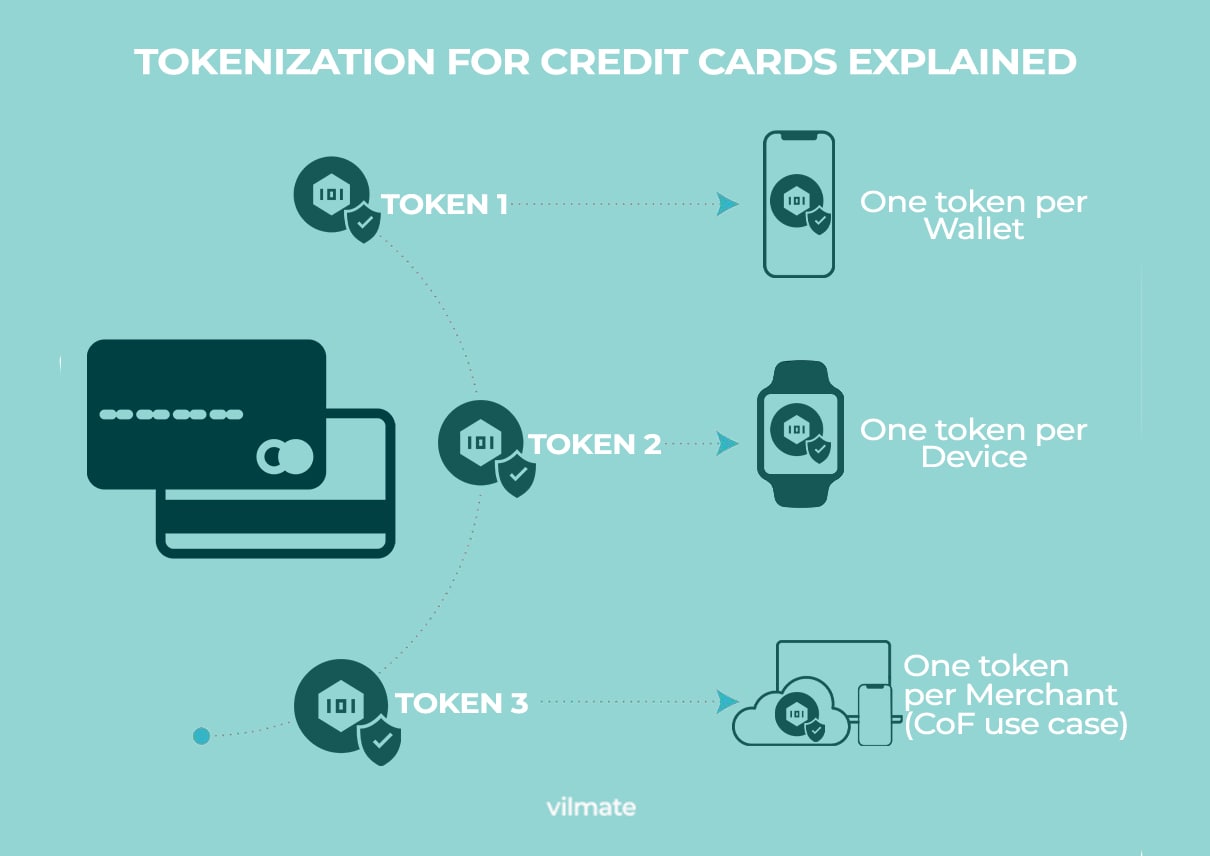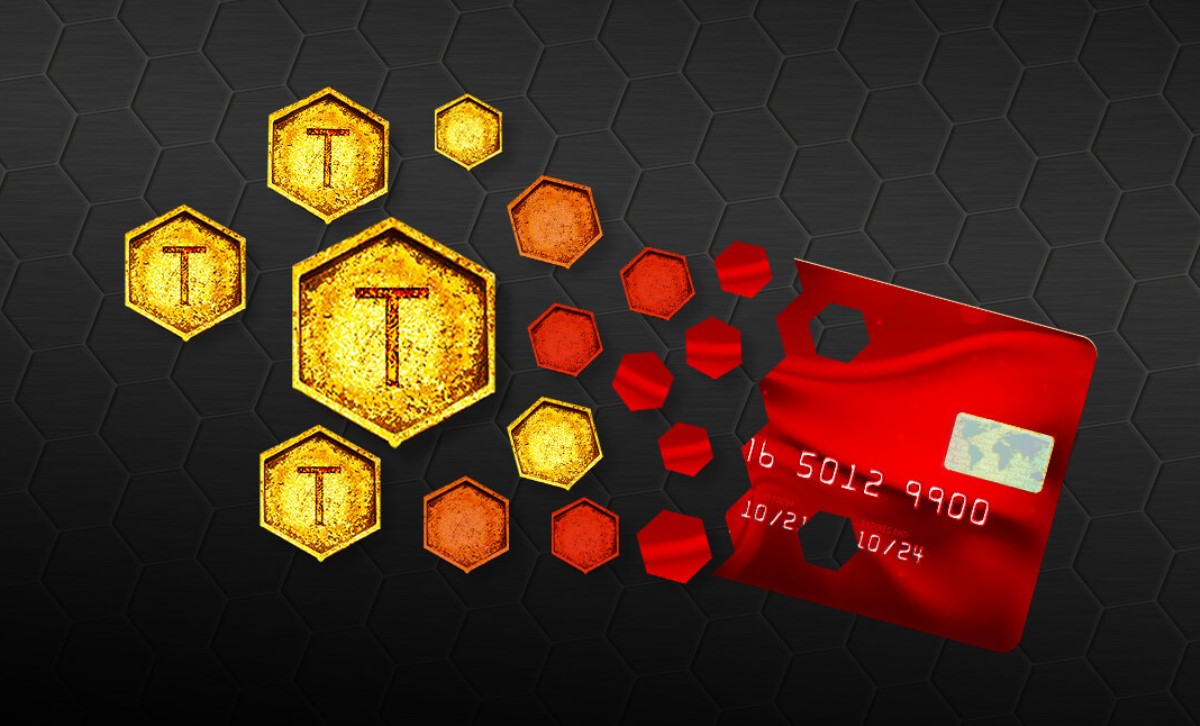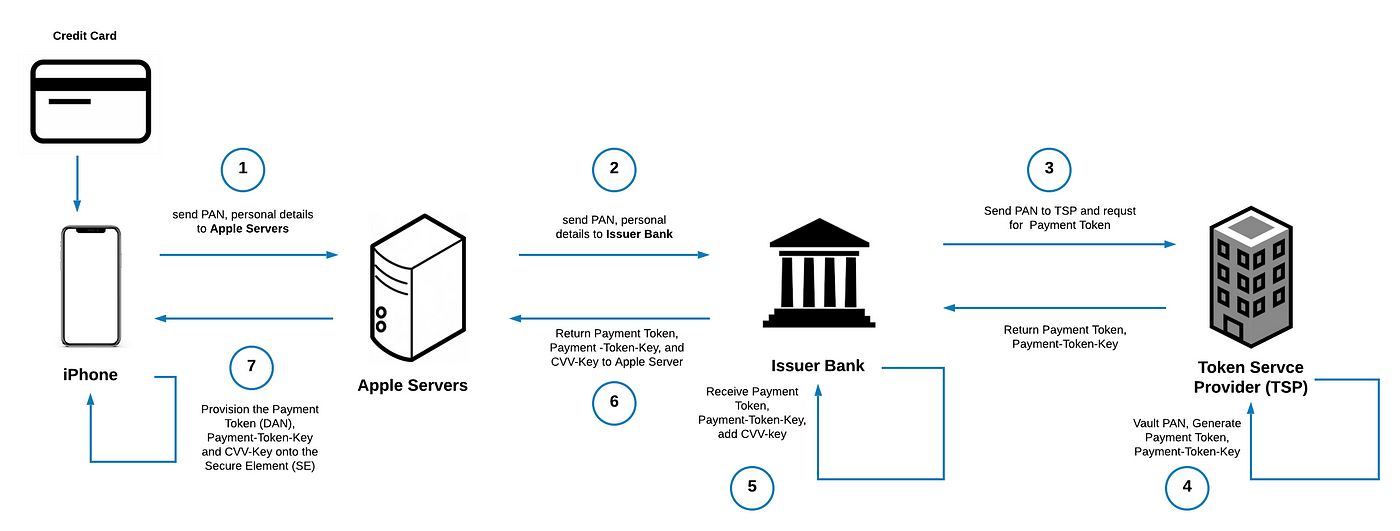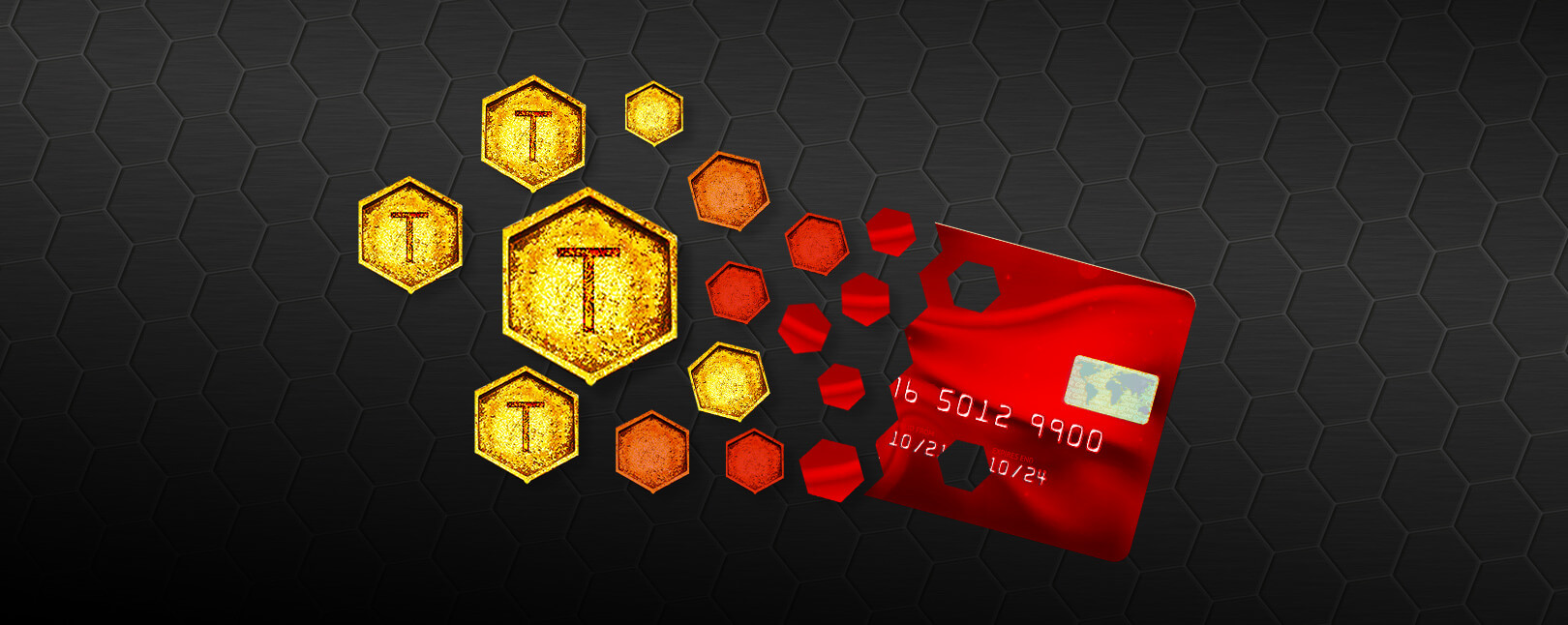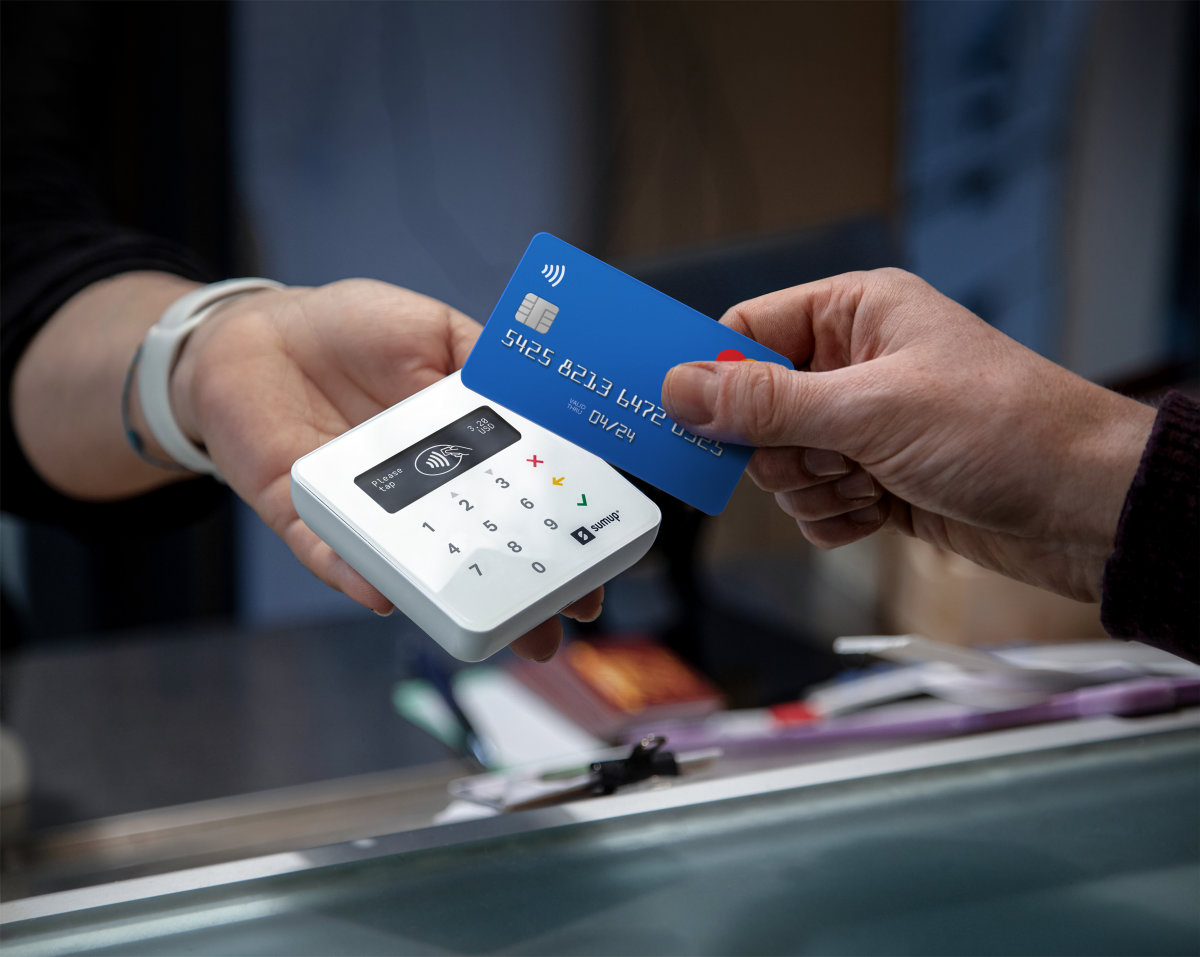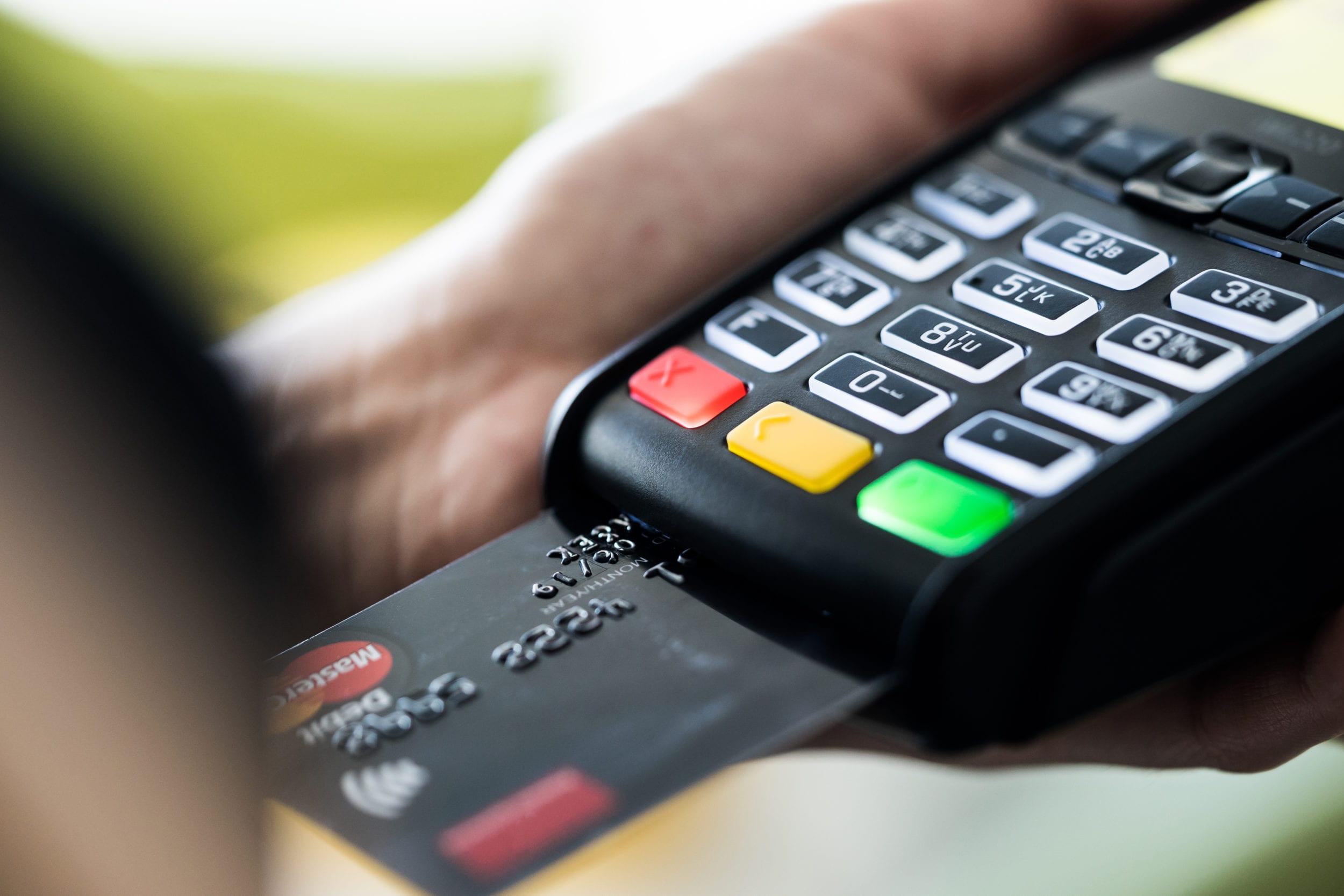Introduction
Credit card tokenization is a method used by businesses to enhance the security and efficiency of processing payment transactions. With the increasing prevalence of online shopping and electronic payments, the need to protect sensitive credit card information has become paramount. Tokenization provides a solution by replacing the actual credit card data with a unique identifier called a token. This token is used to represent the card information during transactions, while the actual card data is securely stored offsite.
Tokenization works by assigning a randomly generated alphanumeric token to each credit card. This token is then linked to the original credit card information in a secure database. When a customer makes a purchase, the token is used to initiate the transaction, safeguarding the sensitive card details from being exposed during the payment process. This method effectively eliminates the need for businesses to store and handle actual credit card data, reducing the risk of data breaches and theft.
The benefits of credit card tokenization are multifold. Besides enhancing security, this technology streamlines the payment process for both businesses and customers. Tokens are lightweight and can be easily transmitted over various platforms, making them ideal for mobile and online payments. Additionally, tokenization reduces the scope of PCI DSS compliance for businesses, as sensitive card data is not stored within their systems. This can lead to cost savings and simplified audit procedures.
During the tokenization process, several steps are undertaken to ensure the security and integrity of the credit card data. First, the card data is captured using encryption techniques. This encrypted data is then transmitted to a tokenization service provider, where it is decrypted and replaced with a token. The token is securely stored in a token vault, while the original card data is permanently deleted or stored in a separate, highly secure environment. Whenever a payment transaction is initiated, the token is used to retrieve the relevant card details from the token vault without exposing the actual card information.
Many businesses across various industries have adopted credit card tokenization to enhance their payment security and improve customer satisfaction. E-commerce platforms, mobile payment apps, and subscription-based services are just a few examples of businesses that leverage this technology. By implementing credit card tokenization, these businesses give their customers peace of mind, knowing that their sensitive payment information is protected.
While credit card tokenization offers significant security advantages, there are also considerations and challenges to be mindful of. It is crucial to ensure that the tokenization process conforms to industry standards and compliance regulations. Additionally, businesses must closely monitor the security of their token vaults and implement measures to safeguard against unauthorized access or breaches.
Overall, credit card tokenization is an important technology in the realm of payment security. By replacing sensitive credit card data with tokens, businesses can significantly reduce the risk of data breaches and improve the overall payment experience for their customers.
What is Credit Card Tokenization?
Credit card tokenization is a process that replaces sensitive credit card information with a unique identifier called a token. This token acts as a substitute for the actual card data during payment transactions, offering enhanced security and reducing the risk of exposing sensitive information.
When a credit card is tokenized, the original card data, such as the card number, expiration date, and CVV, is securely captured and encrypted. This encrypted data is then transmitted to a tokenization service provider, which decrypts the information and replaces it with a randomly generated token. The token and the associated card data are stored separately in a secure database.
During a transaction, the token is used in place of the actual credit card information, ensuring that the sensitive details are not exposed to any potential threats, such as hackers or unauthorized individuals. The token is lightweight, meaning it can be easily transmitted over different platforms and communication channels while maintaining the security of the payment process.
Credit card tokenization offers several benefits for both businesses and customers. For businesses, it reduces the risk of data breaches and theft, as sensitive card data is not stored within their systems. This minimizes the scope of PCI DSS compliance requirements and simplifies the audit process. Additionally, tokenization streamlines the payment process, making it faster and more efficient, which can lead to increased customer satisfaction.
Customers also benefit from credit card tokenization. They can make secure transactions without exposing their card details, whether they are shopping online, using mobile payment apps, or engaging in subscription-based services. Tokenization provides an added layer of security and helps build trust between customers and businesses, as their sensitive payment information is protected.
It is important to note that while credit card tokenization offers significant advantages, it is not a foolproof solution. Businesses must ensure that the tokenization service they use adheres to industry standards and compliance regulations. Additionally, regular monitoring and maintenance of the token vaults are essential to prevent unauthorized access and system vulnerabilities.
In summary, credit card tokenization is a process that replaces sensitive credit card information with unique tokens during payment transactions. It offers enhanced security, reduces the risk of data breaches, and streamlines the payment process. By leveraging tokenization, businesses can protect customer information and provide a secure payment experience, ultimately building trust and confidence.
How Credit Card Tokenization Works
Credit card tokenization is a complex process that involves several steps to ensure the security of sensitive credit card data. This section will outline the key elements and stages of credit card tokenization, providing an understanding of how this technology works.
The process begins with the capture of credit card data, typically during an online purchase or payment transaction. This data includes the card number, expiration date, and CVV (Card Verification Value). To protect this information, it is immediately encrypted using strong encryption algorithms. Encryption ensures that the data cannot be read or accessed by unauthorized individuals.
Once encrypted, the credit card data is transmitted to a tokenization service provider. This provider is responsible for securely handling and storing the data. Upon receiving the encrypted information, the tokenization service provider decrypts it to access the original card details.
For each credit card, the tokenization service provider generates a unique identifier called a token. This token is a randomly generated alphanumeric code that is associated with the specific credit card. The token serves as a substitute for the real card information during future transactions.
In a secure database, the token is linked to the original credit card data, creating a relationship between the token and the actual card details. This linkage allows businesses to retrieve the relevant card information when needed without exposing the sensitive information to potential threats.
When a customer initiates a payment transaction, the token is used instead of the actual credit card data. The token is lightweight and easily transmitted over various platforms and communication channels. It acts as a representation of the card in the transaction process, allowing the payment to be authorized without the need to handle or store the real card information.
Behind the scenes, the tokenization service provider retrieves the associated credit card data from the secure database using the token. The actual card details are used to process the payment, providing the necessary information to complete the transaction.
Throughout the entire tokenization process, the security of the card information is of utmost importance. The tokenization service provider must maintain robust security measures to protect the tokens and the associated data from unauthorized access and breaches. Regular monitoring, vulnerability assessments, and compliance with industry standards are crucial to ensuring the integrity and confidentiality of the sensitive information.
In essence, credit card tokenization works by replacing the original card data with a unique token. This token is used as a substitute during payment transactions, providing enhanced security and protecting sensitive information from exposure. By utilizing tokenization, businesses can safeguard customer data and streamline the payment process, all while enhancing trust and confidence in their services.
Benefits of Credit Card Tokenization
Credit card tokenization offers a range of benefits for businesses and customers alike. By replacing actual credit card data with unique tokens, this technology provides enhanced security, streamlines payment processes, and reduces the risk of data breaches. Let’s explore the key advantages of credit card tokenization:
1. Enhanced Security: Credit card tokenization significantly improves security by protecting sensitive card data. The actual card details are replaced with tokens, ensuring that sensitive information is not exposed during payment transactions. This reduces the risk of data breaches and unauthorized access to customer payment information.
2. Reduced PCI DSS Compliance Scope: Tokenization minimizes the scope of Payment Card Industry Data Security Standard (PCI DSS) compliance requirements for businesses. As the actual card data is not stored within their systems, businesses are not subject to the same level of scrutiny. This can lead to cost savings and simplified audits.
3. Streamlined Payment Process: Tokenization makes payment transactions faster and more efficient. Tokens are lightweight and easily transmitted over different platforms and communication channels, allowing for seamless and secure payment experiences. This speeds up the checkout process, enhancing customer satisfaction.
4. Improved Customer Trust: Credit card tokenization builds trust between businesses and customers. By protecting sensitive payment information, businesses demonstrate their commitment to data security and customer privacy. This instills confidence in customers, encouraging repeat business and loyalty.
5. Mobile and Online Payment Enablement: Tokenization is well suited for mobile and online payments, enabling businesses to offer convenient and secure payment options. Customers can make purchases using their mobile devices or online platforms, knowing that their payment information is protected by tokens.
6. Decreased Risk of Data Breaches: With tokenization, the risk of data breaches associated with storing and handling credit card data is significantly reduced. Even if a breach occurs, the stolen tokens have no value without the corresponding encrypted data and proper decryption processes. This adds an extra layer of protection for customer information.
7. Cost Savings: Implementing credit card tokenization can result in long-term cost savings for businesses. By reducing the risk of data breaches and minimizing the scope of PCI DSS compliance, businesses can avoid costly fines and reputation damage. Additionally, streamlined payment processes can lead to increased operational efficiency and reduced transaction costs.
Credit card tokenization offers a multitude of benefits that improve security, streamline payments, and enhance customer trust. As businesses continue to prioritize data protection, tokenization is becoming an increasingly essential component of their payment strategies.
What Happens During a Tokenization Process
During a tokenization process, several key steps are undertaken to ensure the security and integrity of credit card data. These steps involve the encryption, transmission, generation, and storage of tokens. Let’s explore what happens during a tokenization process:
1. Data Encryption: The tokenization process begins with the encryption of credit card data. When a credit card is used for a payment transaction, the sensitive information such as the card number, expiration date, and CVV are immediately encrypted using robust encryption algorithms. This encryption ensures that the data cannot be read or accessed by unauthorized individuals.
2. Transmission to Tokenization Service Provider: The encrypted credit card data is then securely transmitted to a tokenization service provider. This provider specializes in tokenization and is responsible for handling and processing the credit card information. Robust security measures, such as encrypted connections and secure network protocols, are used to protect the data during transmission.
3. Token Generation and Linkage: Once the encrypted credit card data reaches the tokenization service provider, the actual card information is decrypted to access the original details. For each credit card, a unique token is generated. This token is a randomly generated alphanumeric code that acts as a substitute for the actual credit card data.
4. Secure Token Storage: The generated token is securely stored in a token vault or database, which is maintained by the tokenization service provider. The token is linked to the associated credit card data in the database. This linkage allows for the retrieval of the relevant card details when needed without exposing the sensitive information to potential threats.
5. Use of Tokens in Transactions: When a customer initiates a payment transaction, the token is used instead of the actual credit card data. The token is lightweight and easily transmitted over different platforms and communication channels. It acts as a representation of the credit card during the payment process, ensuring that the sensitive details are not exposed.
6. Retrieval of Actual Card Details: Behind the scenes, the tokenization service provider retrieves the associated credit card data from the secure token vault using the token. The actual card details, such as the card number and expiration date, are used to process the payment and complete the transaction. This retrieval happens securely within the tokenization service provider’s system.
7. Continuous Security and Monitoring: Throughout the tokenization process, security and monitoring are paramount. The tokenization service provider must maintain strict security measures to protect the tokens and the associated data from unauthorized access and breaches. Regular monitoring, vulnerability assessments, and compliance with industry standards ensure the integrity and confidentiality of the sensitive information.
The tokenization process provides a secure and efficient way of processing payment transactions while protecting sensitive credit card data. By replacing the actual card details with tokens, businesses can enhance both security and customer trust in their payment systems.
Examples of Businesses That Use Credit Card Tokenization
Credit card tokenization is a valuable technology that is widely utilized by businesses across various industries. The implementation of tokenization enhances payment security, streamlines transactions, and improves customer trust. Let’s explore some examples of businesses that incorporate credit card tokenization into their operations:
1. E-commerce Platforms: E-commerce platforms, such as Amazon and Shopify, adopt credit card tokenization to provide a secure online payment experience. By tokenizing credit card data, these platforms offer customers a safe and convenient way to make purchases without exposing their sensitive payment information to potential threats.
2. Mobile Payment Apps: Mobile payment apps like Apple Pay and Google Pay utilize credit card tokenization to protect customer payment data. By tokenizing credit card information, these apps allow users to make payments using their smartphones securely. Tokens are transmitted during mobile transactions, ensuring the safety of customer data.
3. Subscription-Based Services: Services that operate on a subscription model, such as streaming platforms like Netflix and Spotify, rely on credit card tokenization. Tokens replace the actual credit card data, enabling automatic recurring payments without storing sensitive information on their own servers. This simplifies the payment process for customers and reduces the risk of data breaches.
4. Healthcare Providers: Healthcare providers, including hospitals and clinics, adopt credit card tokenization for patient payments. By tokenizing credit card information, healthcare providers can securely process patient payments for medical services and protect patient data. This allows patients to pay their bills conveniently and confidently, knowing their sensitive information is safeguarded.
5. Hotel and Hospitality Industry: Hotels and hospitality businesses utilize credit card tokenization to secure guest payments and protect personal data. By tokenizing credit card details, hotels can streamline the check-in and check-out processes, ensuring a safe and efficient experience for guests. Tokens are used for subsequent charges during the stay, eliminating the need to handle and store actual credit card information.
6. Financial Institutions: Financial institutions, such as banks and credit card companies, implement credit card tokenization to strengthen payment security. By replacing actual credit card data with tokens, these institutions can ensure the confidentiality and integrity of their customers’ payment information. This safeguards against fraudulent activities and protects customers’ financial interests.
7. Online Marketplaces: Online marketplaces, such as eBay and Etsy, utilize credit card tokenization to facilitate secure transactions between buyers and sellers. By tokenizing credit card information, these marketplaces offer a safe payment environment, providing both buyers and sellers with peace of mind during online transactions.
These examples demonstrate the widespread adoption of credit card tokenization across various industries. By incorporating this technology into their payment processes, businesses can enhance security, improve the payment experience for customers, and build trust and loyalty with their clientele.
Security Considerations of Credit Card Tokenization
Credit card tokenization is an effective method for enhancing payment security and safeguarding sensitive credit card data. However, it is essential for businesses to consider and address several security considerations when implementing tokenization. Let’s explore some of the key security considerations associated with credit card tokenization:
1. Secure Token Storage: It is crucial to securely store the tokens that replace the actual credit card data. This means implementing robust security measures and access controls to protect the token vault or database where the tokens are stored. Regular security audits and vulnerability assessments are essential to ensure the integrity and confidentiality of the tokens.
2. Encryption and Decryption: The encryption and decryption of credit card data must be performed using strong encryption algorithms. Adequate key management practices should be in place to protect the encryption keys. Proper encryption safeguards sensitive information during transmission and decryption ensures that legitimate parties can access the original credit card data when necessary.
3. Compliance with Regulations: Compliance with industry regulations, such as the Payment Card Industry Data Security Standard (PCI DSS), is crucial when implementing credit card tokenization. Businesses must ensure that their tokenization processes meet the requirements and guidelines outlined by regulatory bodies. Regular assessments and audits can help maintain compliance and identify any potential vulnerabilities.
4. Secure Transmission of Data: When credit card data is transmitted to a tokenization service provider, secure channels such as encrypted connections and secure network protocols should be used. This ensures that the sensitive information is protected during transmission and minimizes the risk of interception or unauthorized access.
5. Access Controls and User Permissions: Access controls and user permissions should be enforced to limit access to sensitive credit card data. Only authorized personnel should have the ability to view and manage the tokens or access the decrypted credit card information. Implementing strong passwords, multi-factor authentication, and role-based access can help strengthen access controls.
6. Auditing and Monitoring: Regular auditing and monitoring of tokenization processes and systems are essential to detect any unusual activities or potential security breaches. Intrusion detection systems, log analysis, and security event monitoring can help identify suspicious behavior and mitigate security risks in a timely manner.
7. Vendor Selection and Due Diligence: Businesses should carefully select a reputable and trustworthy tokenization service provider. Conducting due diligence and evaluating the provider’s security practices and certifications can help ensure that they adhere to industry standards and best practices. Service level agreements should also outline the provider’s responsibilities, liabilities, and security commitments.
Implementing credit card tokenization alone is not enough to guarantee security; it requires a comprehensive approach that considers all the relevant security aspects. By addressing these considerations, businesses can enhance the security of their payment processes, protect customer data, and build trust with their clientele.
Challenges and Limitations of Credit Card Tokenization
While credit card tokenization offers numerous benefits in terms of payment security and data protection, it also comes with certain challenges and limitations. Businesses must be aware of these factors when implementing credit card tokenization. Let’s explore some of the challenges and limitations associated with credit card tokenization:
1. Dependency on Tokenization Service Providers: Implementing credit card tokenization requires businesses to rely on third-party tokenization service providers. Businesses must carefully select a reputable provider and ensure they have robust security measures in place. The performance and reliability of the provider can impact the overall effectiveness of the tokenization process.
2. Difficulties in Data Migration: Migrating existing credit card data to a tokenized format can be challenging. Converting data from legacy systems to work with the tokenization process may require additional development efforts and careful planning to ensure a smooth transition without compromising data integrity.
3. Compatibility with Legacy Systems: Compatibility with legacy systems can be a challenge when implementing credit card tokenization. Existing payment systems and processes may need to be updated or integrated with the tokenization process, which can be time-consuming and require significant technical expertise.
4. Increased Complexity: Tokenization adds complexity to the payment process. Businesses need to ensure that their systems are capable of handling and processing tokens effectively. This includes updating payment gateways, providing support for tokenized transactions, and maintaining a seamless user experience during payment interactions.
5. Limited Scope of Data Protection: While tokenization protects credit card data at the transaction level, it does not secure other sensitive personal information associated with the payment, such as the cardholder’s name or billing address. Businesses should implement additional measures, such as encryption and access controls, to protect the entirety of customer data.
6. Compliance with Regulations: Although credit card tokenization helps reduce the scope of Payment Card Industry Data Security Standard (PCI DSS) compliance, businesses must still adhere to other data protection regulations. It is essential to stay updated with evolving compliance requirements and ensure that tokenization processes align with the applicable regulations in the industry.
7. Cost Considerations: Implementing credit card tokenization may involve upfront costs for infrastructure, software updates, and integration efforts. Ongoing costs for maintaining the tokenization system and complying with security measures should also be taken into account. However, these costs are generally offset by the potential savings from reduced PCI DSS compliance scope and mitigation of data breach risks.
Despite these challenges and limitations, credit card tokenization remains a valuable tool for enhancing payment security and protecting customer data. Businesses should carefully consider these factors and address them accordingly to maximize the benefits of tokenization while mitigating potential drawbacks.
Conclusion
Credit card tokenization is an effective and widely adopted method for enhancing payment security and protecting sensitive credit card information. By replacing actual card data with unique tokens, businesses can reduce the risk of data breaches, streamline payment processes, and build customer trust.
Throughout this article, we have explored the various aspects of credit card tokenization, including its definition, the process involved, the benefits it offers, and the security considerations that businesses must address. We have also discussed examples of businesses that leverage tokenization and the challenges and limitations associated with this technology.
Credit card tokenization provides several significant advantages. It enhances security by replacing actual card details with tokens during payment transactions, reducing the risk of data breaches and unauthorized access. Tokenization also streamlines the payment process, improving operational efficiency and customer satisfaction. It simplifies PCI DSS compliance by minimizing the scope of requirements, which can lead to cost savings for businesses.
Businesses across various industries, including e-commerce platforms, mobile payment apps, and subscription-based services, are actively adopting credit card tokenization to protect customer payment information. Implementing tokenization demonstrates a commitment to data security and fosters trust and confidence in customers, ultimately leading to increased loyalty and repeat business.
However, businesses must also understand and address the security considerations and challenges associated with credit card tokenization. Safeguarding token storage, ensuring secure data transmission, maintaining compliance with regulations, and carefully selecting tokenization service providers are critical steps towards effective implementation.
In conclusion, credit card tokenization offers a robust solution for businesses seeking to optimize payment security and protect sensitive customer data. By embracing this technology and addressing the related challenges, businesses can strengthen payment processes, build customer trust, and mitigate the risks associated with data breaches. With the continued growth of online and mobile transactions, credit card tokenization is likely to become even more essential in the future, safeguarding payment transactions in an increasingly interconnected world.







